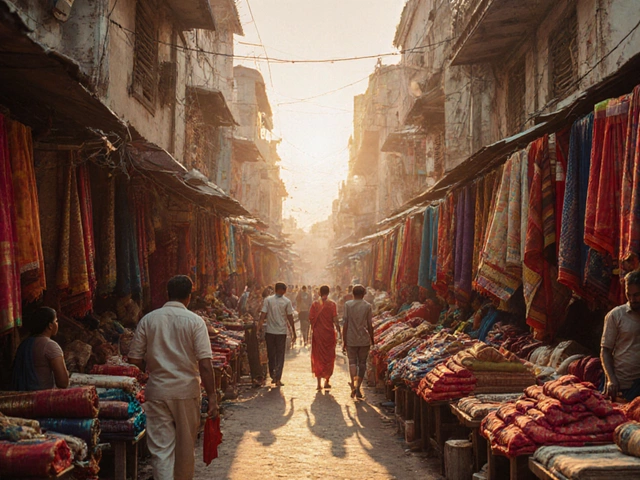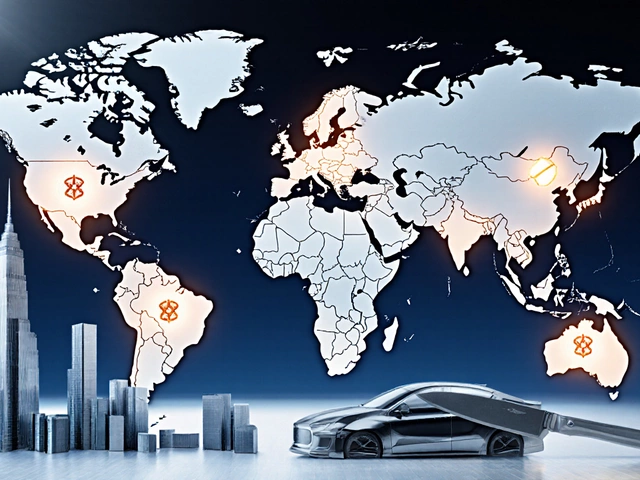Richest Pharmacist in the World: The Indian Pharma Tycoon Behind the Fortune

Imagine building a business so big that it turns a quiet pharmacist into one of the world’s wealthiest people. That’s exactly what happened with Dilip Shanghvi—the person holding the title of the richest pharmacist on the planet, sitting right at the heart of India’s booming pharma game. And honestly, his story isn’t just about eye-popping wealth, but also about how the pharma manufacturing scene in India flipped the global script.
You might be surprised to learn that the biggest pharmacy fortune didn’t start from a fancy office in the West, but from a tiny shop in Kolkata. Shanghvi began his journey by selling psychiatric drugs—just a handful of products—before launching Sun Pharma in 1983. Fast forward, and Sun Pharma isn’t just a household name; it’s up there among the world’s largest generic drug makers. While you might not see Shanghvi’s face splashed across every magazine, his net worth often dances above $20 billion, thanks to the wild growth of India’s pharma industry.
- Meet the Richest Pharmacist: Dilip Shanghvi
- From Pharmacy Counter to Billionaire Boardroom
- The Secret Sauce Behind Indian Pharma’s Success
- Practical Tips: Learning from India’s Pharma Giants
Meet the Richest Pharmacist: Dilip Shanghvi
When you think about big money in the pharma world, one name stands out above the rest—Dilip Shanghvi. This guy’s journey from running his dad’s drugstore in Kolkata to becoming the richest pharmacist in the world is straight out of a business manual. Shanghvi started Sun Pharmaceutical Industries in 1983 with just ₹10,000 (which is less than $150 today). Instead of trying to tackle everything, he picked a small niche: psychiatric drugs. That decision made all the difference.
Today, Sun Pharma is a behemoth. It’s India’s largest pharmaceutical company by market cap and one of the biggest makers of generic drugs worldwide. Shanghvi’s personal wealth has crossed $20 billion, mostly thanks to Sun Pharma’s skyrocketing growth. What’s wild is, he kept a pretty low profile. You won’t spot him giving flashy interviews or throwing huge parties, but in the boardroom, he’s a legend.
Here’s a snapshot of his achievements:
- Founded Sun Pharma with a single product line, and grew it into a global giant.
- Snapped up big names like Ranbaxy Laboratories in 2014, making Sun Pharma a top-5 global generics player overnight.
- Kept the company focused on high-margin specialty drugs, not just mass generics.
- Became the third-richest person in India for several years running.
Just to put Sun Pharma’s reach into perspective, check out these numbers:
| Key Figure | Value |
|---|---|
| Market Capitalization (2025) | Over $70 billion |
| Annual Revenue (2024) | $7.2 billion |
| Number of Employees | ~37,000 |
| Countries Served | 100+ |
Dilip Shanghvi’s story isn’t just about his net worth. It’s about discipline, calculated risks, and turning India into a global pharmacy powerhouse. He’s still actively steering the company, making quiet moves that keep him at the top. If you want an example of how focus and patience can beat flashy beginnings, look no further.
From Pharmacy Counter to Billionaire Boardroom
Dilip Shanghvi’s story doesn’t follow some movie cliché where a suitcase of cash changes hands. He literally started by helping out in his father’s small medicine shop in Kolkata. In 1983, with about Rs. 10,000 (roughly $1,200 back then), he launched Sun Pharmaceutical Industries, focused on making psychiatric medicines that bigger companies ignored at the time.
Here’s the wild part: Instead of sticking to local markets, Shanghvi aimed directly for hospitals, clinics, and then exports. In less than two decades, Sun became India’s fifth-largest pharma company. But Shanghvi wasn’t just chasing numbers—he went all-in when other companies hesitated, acquiring a floundering Ranbaxy Laboratories in 2014 for $4 billion. This move was a game-changer, making Sun Pharma the biggest pharma company in India and among the top five generic drug makers worldwide.
Just look at the company’s numbers for a minute:
| Year | Revenue (USD) | Employees |
|---|---|---|
| 2000 | $80 million | 2,000 |
| 2014 | $2.9 billion | 15,000 |
| 2024 | $6.2 billion | 38,000+ |
Shanghvi’s method? Target smaller niche markets, build trust with strict quality, and don’t shy away from taking risks. He’s known for keeping off the media radar, but his business moves speak way louder than headlines. No small talk, just laser-focus on building richest pharmacist-level wealth the hard way.

The Secret Sauce Behind Indian Pharma’s Success
So, how did India end up as the world’s medicine powerhouse? Honestly, it’s not just luck. There’s a mix of strategy, clever moves, and real grit. Right now, India supplies over 20% of the world’s generic medicines. That means if you’re popping a common pill anywhere across the globe, odds are it came from an Indian company. And the numbers? The Indian pharma industry pulled in over $50 billion in revenue in 2024, with exports making up more than half that amount.
Here’s what really sets Indian pharma apart:
- Low-cost manufacturing: Labor and operational costs are much lower than in the US or Europe, which lets Indian companies make high-quality drugs for a fraction of the price.
- Focused on generics: As patents on blockbuster drugs expire, Indian firms crank out affordable versions so fast, they often beat everyone else to global markets.
- Tough regulators: The Indian government doesn’t mess around—production must meet US FDA and European standards to qualify for export. Sun Pharma, for example, has dozens of plants approved by these agencies.
- Skilled workforce: There are nearly 1.4 million people working in pharma in India. With a steady stream of science grads and pharmacists, the talent pool doesn’t dry up.
Check this comparison out to get the scale of things:
| Country | Pharma Exports (2024, in $ billion) | Global Generic Drug Share |
|---|---|---|
| India | 27.9 | Over 20% |
| China | 18.5 | ~10% |
| USA | 56.8 | Below 5% |
People talk about Silicon Valley, but pharma manufacturers in India are a different kind of tech success—one that’s built on price, quality, and speed. Sun Pharma, Dr. Reddy’s, Cipla, Lupin, and Aurobindo are names that pop up on pharmacy shelves across continents, not just in India. Even the richest pharmacist in the world owes his fortune to this ecosystem. That’s the kind of impact we’re dealing with.
Practical Tips: Learning from India’s Pharma Giants
If you’re eyeing the pharma business or just want to understand how India’s biggest names made it, let’s break down what actually works. The rise of Dilip Shanghvi and other Indian pharma billionaires isn’t luck. It’s a mix of smart thinking, calculated risks, and sharp execution.
First, let’s talk about focus. Sun Pharma’s initial years show a clear pattern: pick a niche and own it. They didn’t try to make every medicine under the sun from day one. Instead, they started with psychiatric drugs, nailing quality and building trust. That’s a huge lesson—stick to what you know and do it better than anyone else.
- richest pharmacist stories often have a simple start—launch with a few products, master them, then scale up.
- Investment in research isn’t just a buzzword. Sun Pharma still pours money into R&D to create better generics and crack global regulations. If you’re serious, you can’t skip the science or the paperwork.
- Compliance is non-negotiable. A lot of Indian firms made it big by following US FDA standards, not just local rules. Getting this right opens up the huge US and European markets.
Another major tip: build partnerships. Take Dr. Reddy’s Labs and Cipla, for example. Both forged ties worldwide, from handshake deals with global suppliers to teaming up for distribution. The more you collaborate, the wider your reach grows—and you don’t get stuck in a local bubble.
Last thing, and it’s underrated—keep costs down without sacrificing quality. Indian manufacturers became global leaders partly by offering top-grade generics at lower prices. Good supply chain management, bulk buying of raw material, and tight control over overheads kept them competitive—even against much older Western giants.
So whether you’re hustling to launch a pharma business, working in the industry, or just curious, these real-world tactics from India’s top players give you a clear roadmap: go niche, double down on R&D, stay compliant, collaborate, and be relentless about quality and costs. It’s not flashy, but ask anyone in pharma—it absolutely works.





